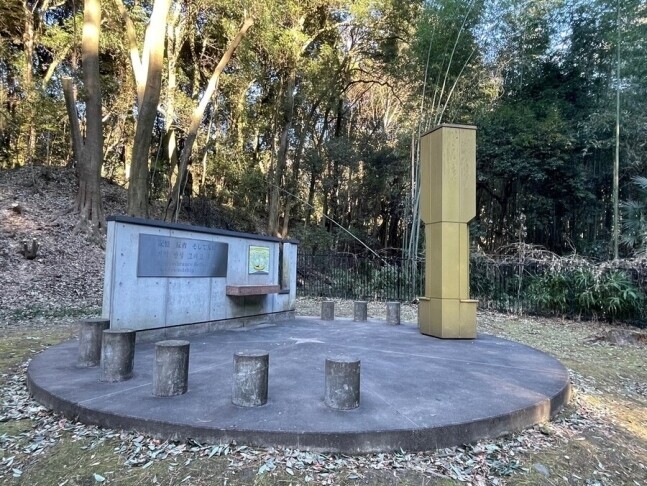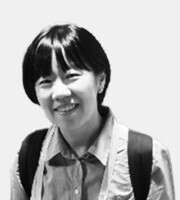hankyoreh
Links to other country sites 다른 나라 사이트 링크
[Correspondent’s column] Message sent by removal of Korean forced labor memorial is loud and clear


By Kim So-youn, Tokyo correspondent
The memorial to Korean victims of forced labor during the Japanese occupation of Korea in Gunma Prefectural Forest Park in Takasaki, Japan, stood as a concrete symbol of friendly relations between South Korea and Japan for the past 20 years. Now, it no longer exists.
The local government blocked off the entire park to the public before starting the removal of the memorial on Monday. With no access to the scene, Japanese new outlets had to resort to using helicopters to catch a glimpse of the demolition site.
According to an aerial photograph taken by the Asahi Shimbun, where the memorial once stood is now an empty lot. Concrete rubble is all that is left, with the memorial’s round stone base, over 7 meters in diameter, and its concrete cenotaph, nearly 2 meters tall and 4.5 meters wide, having been smashed into pieces.
The metal plaque engraved with the words “Remembrance, Reflection and Friendship memorial” that graced the memorial was pried off prior to the demolition and returned to the Japanese activist group that had installed and maintained the memorial for the past two decades.
The ruthlessness with which the memorial was demolished struck me as a sign of ignorance on the part of the Gunma local government, as it demonstrates how little they know of the memorial’s significance.
The 4-meter-tall golden tower that had reached up to the sky, and the concrete cenotaph behind it both had large vertical openings in them that faced in the direction of the Korean Peninsula.
Theses gaps were created with the intention of enabling the spirits of the hundreds of Koreans who lost their lives in this faraway land of Gunma, Japan, to return to their homeland. A compass was drawn on the memorial’s round stone base, as if to guide the spirits home.
These details, which I learned while researching the memorial before its demolition, filled me with sadness and gratitude. Overcome by these contradictory feelings, I gazed in the direction of the Korean Peninsula for quite some time.
In 1995, 50 years after Japan was defeated in World War II, Gunma residents took it upon themselves to investigate and research the history of Korean forced labor in the region.
Their research estimated that during the Japanese occupation, around 6,000 Koreans were forced to work in mines and munitions factories in the prefecture. Ultimately, somewhere between 300 and 500 of these Koreans are estimated to have lost their lives.
Japanese civil society vowed to never forget this tragedy by erecting a memorial honoring Korean victims in April 2004, an act that was an attempt on their part to move forward into a future where such atrocities are never repeated.
The 1995 statement by then-Prime Minister Tomiichi Murayama in which he apologized for Japanese colonialism and wars of conquest and the joint declaration of 1998 made by former Japanese Prime Minister Keizo Obuchi (1937-2000) and former South Korean President Kim Dae-jung (1924-2009), which expressed “deep remorse and heartfelt apology” for Japan’s colonial rule over South Korea, helped to secure the unanimous decision by the Gunma prefectural assembly to erect a memorial to Korean laborers in a park owned by the local government.
The memorial’s removal clearly demonstrates that improved relations between Prime Minister Kishida Fumio and President Yoon Suk-yeol — who has spent his term brushing under the rug issues related to Korea’s unfinished history with Japan, such as the compensation for Korean victims of forced labor — are not based on “friendly relations,” but rather the erasure of history.
What sense does it make to respond to growing right-wing opposition to the monument over controversy sparked by use of the phrase “forced mobilization” during vigils there between 2004 and 2012 by bulldozing away any trace of it?
The forced mobilization of Koreans by Japan during the latter’s colonial rule over the former is a fact that has been recognized by the Japanese government and international organizations.
In July 2015, at a World Heritage Committee session that granted several Japanese industrial sites World Heritage status for contributing to the country’s economic modernization, Japan’s then-ambassador to UNESCO, Kuni Sato, stated, “There were a large number of Koreans and others who were brought against their will and forced to work under harsh conditions in the 1940s at some of the sites.”
Despite public sentiment about this incident, the Yoon administration is content to comment only that the Korean and Japanese authorities are “engaging in necessary communication” on the matter. To that, Gunma Gov. Ichita Yamamoto has stated that nothing has come through diplomatic channels from South Korea, while Minister of Foreign Affairs Yoko Kamikawa has avoided making an official statement, saying the decision was made by the local government.
Just like that, a memorial that stood for 20 years has ceased to exist in the span of three days.
Please direct questions or comments to [english@hani.co.kr]

Editorial・opinion
![[Guest essay] Preventing Korean Peninsula from becoming front line of new cold war [Guest essay] Preventing Korean Peninsula from becoming front line of new cold war](https://flexible.img.hani.co.kr/flexible/normal/500/300/imgdb/original/2024/0507/7217150679227807.jpg) [Guest essay] Preventing Korean Peninsula from becoming front line of new cold war
[Guest essay] Preventing Korean Peninsula from becoming front line of new cold war![[Column] The state is back — but is it in business? [Column] The state is back — but is it in business?](https://flexible.img.hani.co.kr/flexible/normal/500/300/imgdb/original/2024/0506/8217149564092725.jpg) [Column] The state is back — but is it in business?
[Column] The state is back — but is it in business?- [Column] Life on our Trisolaris
- [Editorial] Penalties for airing allegations against Korea’s first lady endanger free press
- [Editorial] Yoon must halt procurement of SM-3 interceptor missiles
- [Guest essay] Maybe Korea’s rapid population decline is an opportunity, not a crisis
- [Column] Can Yoon steer diplomacy with Russia, China back on track?
- [Column] Season 2 of special prosecutor probe may be coming to Korea soon
- [Column] Park Geun-hye déjà vu in Yoon Suk-yeol
- [Editorial] New weight of N. Korea’s nuclear threats makes dialogue all the more urgent
Most viewed articles
- 1Behind-the-times gender change regulations leave trans Koreans in the lurch
- 2South Korean ambassador attends Putin’s inauguration as US and others boycott
- 3Family that exposed military cover-up of loved one’s death reflect on Marine’s death
- 4[Guest essay] Preventing Korean Peninsula from becoming front line of new cold war
- 5Yoon’s broken-compass diplomacy is steering Korea into serving US, Japanese interests
- 6Marines who survived flood that killed colleague urge president to OK special counsel probe
- 7Yoon’s revival of civil affairs senior secretary criticized as shield against judicial scrutiny
- 8Japan says its directives were aimed at increasing Line’s security, not pushing Naver buyout
- 91 in 10 marriages in Korea last year was with a foreign national
- 10[Column] The nuclear umbrella and the afterlife